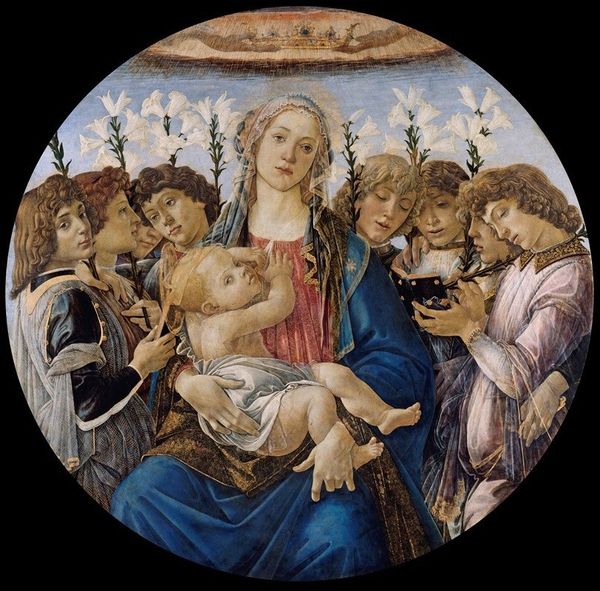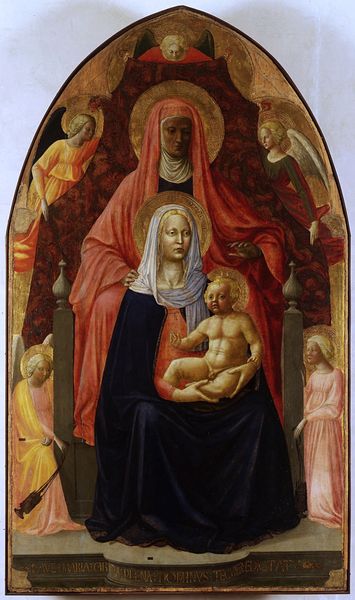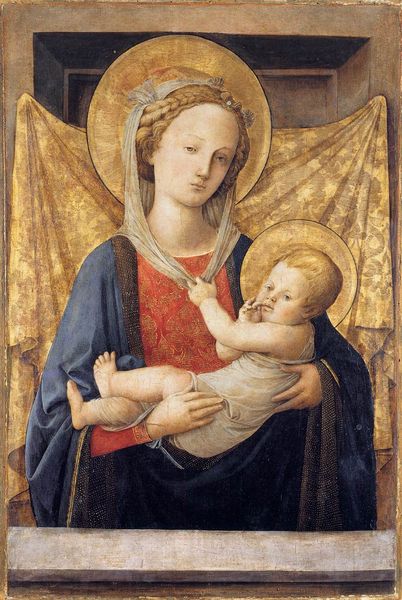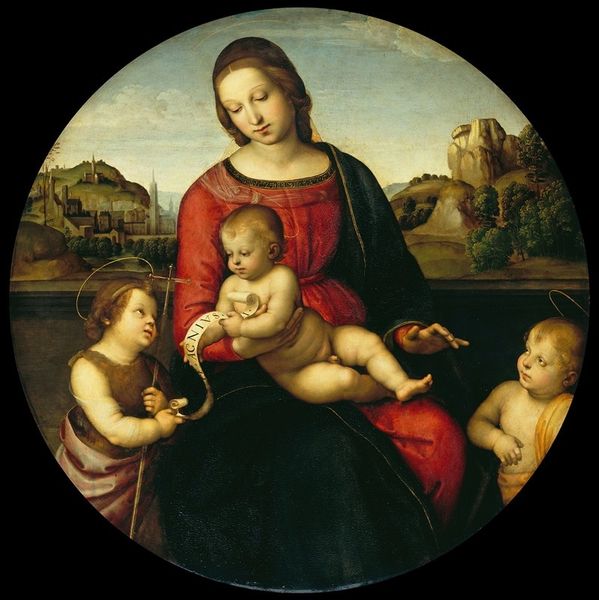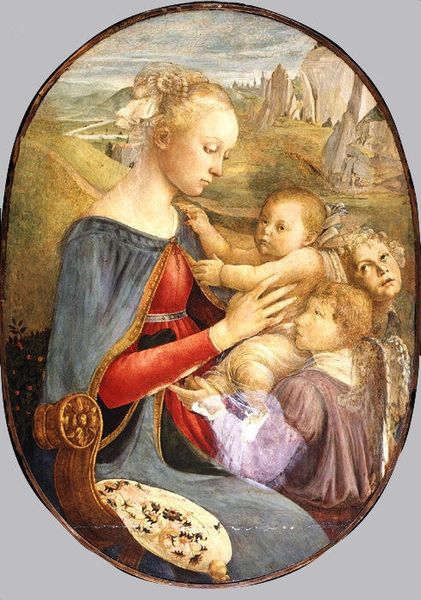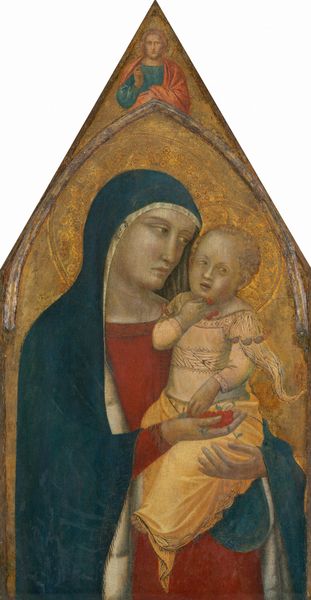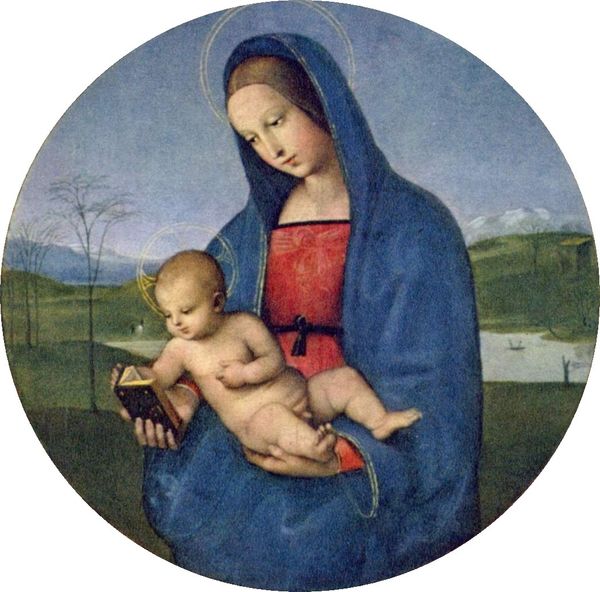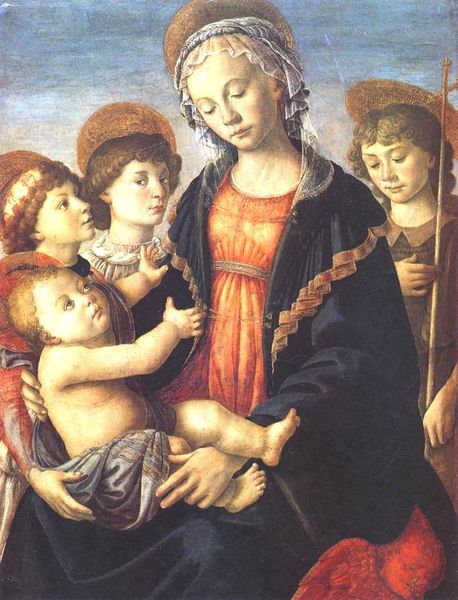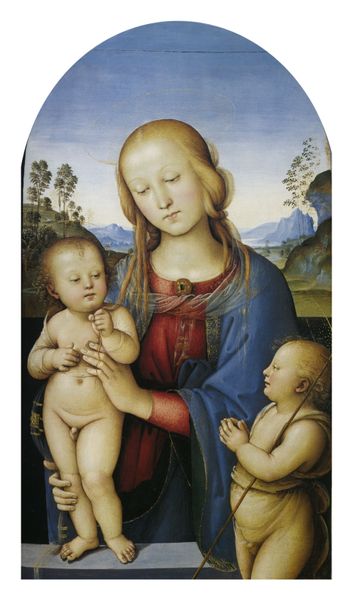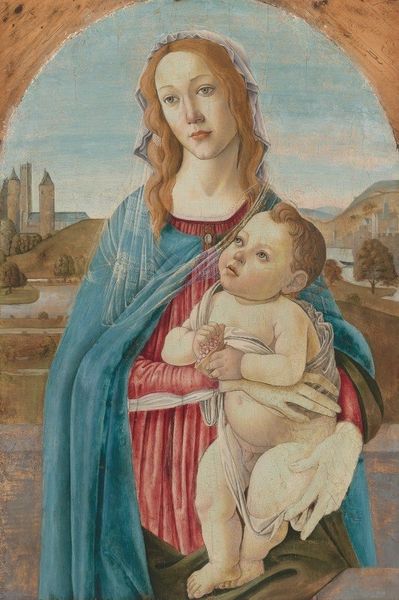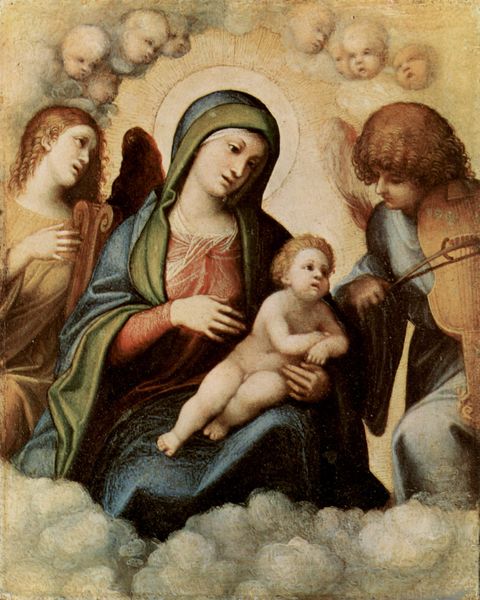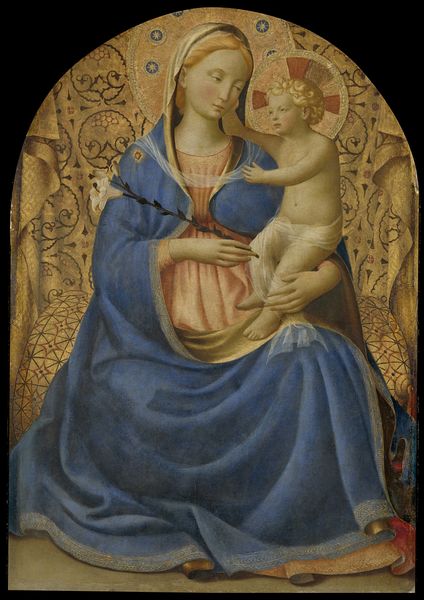
The Virgin and Child with Saint John and an Angel 1490
0:00
0:00
painting, oil-paint
#
portrait
#
painting
#
oil-paint
#
figuration
#
oil painting
#
history-painting
#
italian-renaissance
#
early-renaissance
Copyright: Public domain
At first glance, this tondo (a type of circular painting popular during the Renaissance) is immediately recognisable as a work by Sandro Botticelli (1445-1510)… or is it? Although the work bears the signature facial appearance of Botticelli’s figures, this painting is now believed to have been completed by members of Botticelli’s workshop. Does the involvement of workshop assistants devalue a painting? Why, or why not? 👇💭 The spherical form of this painting reflects the taste for classicism during the Italian Renaissance. The circle was seen as a symbol of perfection, representing harmony and unity. This taste for classical symmetry can be noticed throughout Renaissance art and architecture. ⚪️ Within the circle are four figures, including the infant Christ. The three figures of the Virgin Mary, Saint John, and an angel are arranged in a triangular composition which symbolically denotes their importance. The Virgin Mary is positioned at the forefront, ahead of the two side figures. Saint John and the angel subtly lean towards Mary, drawing our gaze to her. Their curved postures are framed by the shape of the panel. The Virgin Mary is depicted as she breastfeeds her son. This central detail was only recently unveiled – prior to the restoration of this tondo in 2018, Mary’s chest had been overpainted! She gazes out of the painting, directly meeting the eye of the viewer. The angel to her side looks down, hands clasped in a pose of respectful devotion. 🙏 The three figures are each crowned with translucent golden haloes. This effect is impressive when considering that Botticelli and his assistants worked with the medium of egg tempera rather than oil paint. Egg tempera paint consists of pigment mixed with egg yolk, which dries very quickly. This means it is difficult to blend. 🖌️ Editor: Lucy Jude Grantham
Comments
No comments
Be the first to comment and join the conversation on the ultimate creative platform.
